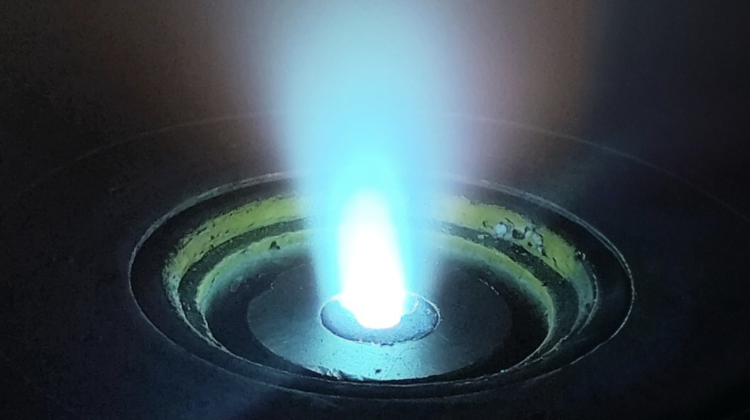
The EU-funded LUMINOSITY project brings together research and industry partners across Europe to further develop perovskite solar cells on flexible substrates. Project partner Fraunhofer FEP is making promising progress in the deposition of tin oxide and cesium iodide (above) using its expertise in anodic-arc evaporation. A project update will be presented at the pro flex conference 2025 for roll-to-roll coatings of flexible materials May 6-7 in Dresden, Germany.
In the European Union-funded LUMINOSITY project, 15 research and industry partners from nine European countries are working together to establish the essential fundamentals for perovskite solar cells on flexible substrates. Fraunhofer FEP is investigating a process that uses a special electron source (hollow cathode arc discharge) and offers advantages for the targeted adjustment of layer parameters for a variety of materials. The combination of evaporation and plasma processes allows precise customization of the layer properties.
In previous projects, it has already been shown that the anodic-arc evaporation can produce high-quality, droplet-free and smooth, extremely hard carbon layers (ta-C layers) for applications such as hard coatings. Anodic-arc evaporation has also been used to successfully deposit transparent conductive layers for the next generation of silicon heterojunction solar cells.
So far, the method could only be used for electrically conductive materials. However, LUMINOSITY has achieved promising initial results for the deposition of tin oxide and cesium iodide. Tin oxide is an important material for the innovative manufacturing technology for flexible solar cells pursued in the LUMINOSITY project. This requires protective and electrically functional layers that can be deposited gently – without damaging the underlying areas. The evaporation of cesium iodide shows that, in the future, the deposition of the active perovskite semiconductor layer using this method could also be of great interest.
The coating process can be easily scaled in coating width by combining several evaporation modules, Fraunhofer FEP says.

